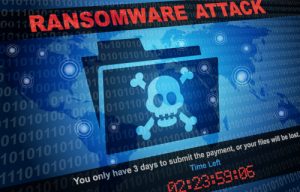 Ransomware is a type of malware that locks you out and accesses the network. It locks up important files and data, demands payment, and steals them. By preventing and detecting ransomware, you can protect your digital assets and employees from this subtle threat.
Ransomware is a type of malware that locks you out and accesses the network. It locks up important files and data, demands payment, and steals them. By preventing and detecting ransomware, you can protect your digital assets and employees from this subtle threat.
Why is it important to prevent and detect ransomware attacks?
It is difficult to remove ransomware from your network once it has been installed. Preventing ransomware is the best plan. By preventing ransomware attacks and detecting them, you can protect yourself from:
- Secrets of the company
- Employee and Customer Identities
- Financial information
- Other sensitive data
Ransomware attacks can ruin your company's image if your customers' personal information is leaked. This malware is becoming harder to detect, so you need to be aware of how to protect yourself.
3 Ransomware Prevention Techniques
Cybersecurity teams need to warn your users about digital threats. Preventive plans protect your business information.
Backups of your system
Keep your documents and information on at least two different locations. Most people store their files on the hard drive of their computer. Ransomware can access documents stored on hard drives.
Cloud solutions are a safe way to backup your data. It is even more effective if you encrypt the files in the cloud.
Employee Education
 Ransomware attacks are easier to carry out because more people work from home. Workers unintentionally expose their company to risk when they share files on networks that are not protected.
Ransomware attacks are easier to carry out because more people work from home. Workers unintentionally expose their company to risk when they share files on networks that are not protected.
Teach your staff how to safely share files and how to identify if a message might be contaminated.
Employees should only be allowed to share files over private networks. Try using an email service or knowledge base that encrypts data until it can be viewed by the right person.
Cybersecurity Measures
Install security services to instantly move suspicious content into a separate location. All company computers should have access to this service. Quarantine measures will put emails and other messages that contain suspicious links or attachments into a secure location. Then you can examine the suspicious content, without putting your digital infrastructure at risk.
Ransomware attacks: How to find them
What happens if ransomware infects your network? You'll find below the most reliable and common detection methods.
Signature-Based
Signature-based software compares malware samples to code samples in familiar internal files. It is a good way to identify malware that has already been seen. It will not recognize ransomware that hasn't been seen before.
Behavior-Based
The behavior-based detection method compares files' behaviors, not codes. It examines the names of files and operating system behavior. It can tell the difference between older files that are harmless and newer ones by comparing their reactions.
Deception-Based
Solutions based on deception lure ransomware. False files are created to lure ransomware. The solution can detect the ransomware's intent when it attempts to encrypt the bait file. Software that uses deception is one of the most effective ways to detect ransomware.
Once an attack has begun, it is difficult to stop or mitigate the damage. However, you can make detailed plans in advance to prevent and detect ransomware attacks. Integrated Technology Systems is here to help you put a security plan in place. Call today to schedule a time to discuss your specific needs.
Integrated Technology Systems
6 East 45th Street, Suite 400
New York, NY 10017
212-750-5420
https://www.itsnyc.com



